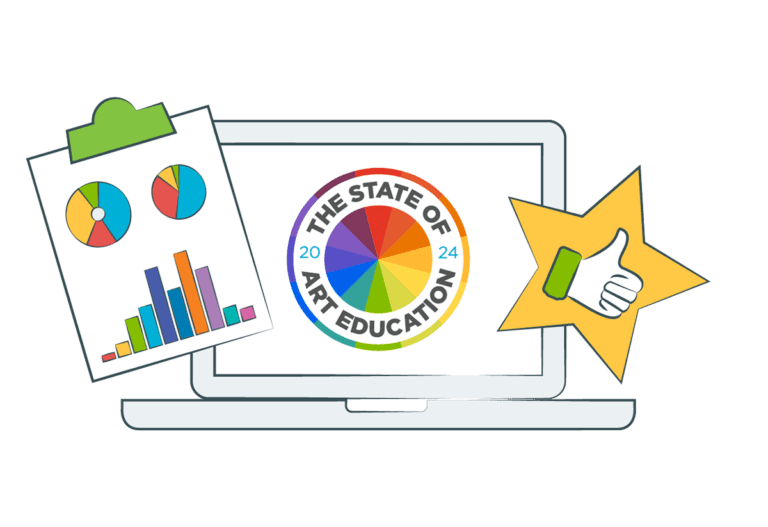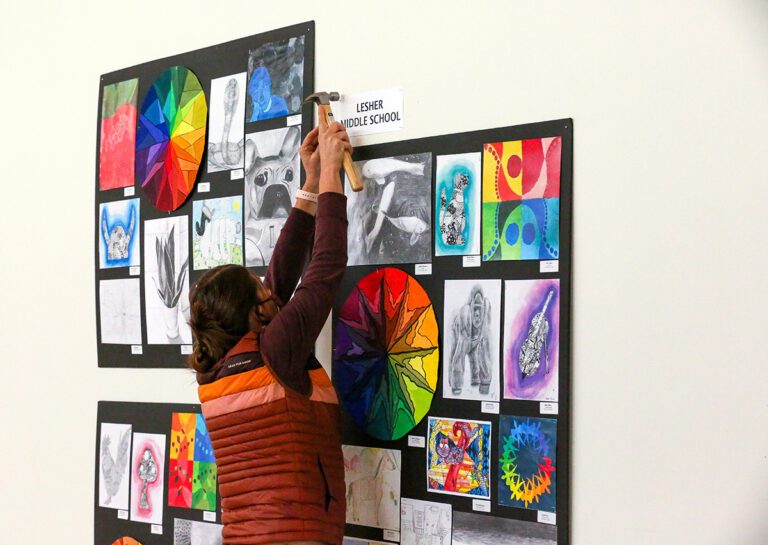As an art teacher, you know the value of the arts. You want to have a strong art program supported by co-workers, community members, and administrators. You work tirelessly to put on art shows, enter student work in competitions, and hang work in the hall. But does it produce the results you’re seeking?
If not, it may be because no one understands what you’re saying.

As the art teacher, you’re the expert in your building. You know your content forward, backward, and inside out. When planning lessons, you’re careful to use the language and instructional strategies your students will understand. However, you may forget this important detail when advocating for the arts.
Many art teachers often target one or more of the following groups: teachers, parents, administrators, or school board members. All of these people have their own areas of expertise, but many of them have little experience or knowledge about the arts. If you use words they don’t understand, they will likely shut down and stop listening.
With your never-ending to-do list, it’s tempting to pick a single advocacy activity with the goal of reaching everyone. But, often, when you try to reach everyone at once, you end up reaching no one.
So, how do you get people to pay attention?
As you advocate for the arts, it’s important to keep the following questions in mind regarding your audience.

To whom are you talking?
To help you hone in on the language to use and angles to work, be as specific as possible.
Why do you want to change this person’s mind?
Clearly define your need. Do you need a bigger budget? Are you trying to get approval for a museum field trip or a visiting artist? Do you want longer class periods or more collaborative planning time?
What objections might this person have to your request?
Think about your request from the other person’s point of view. Your principal may worry about the safety and security of students on a field trip. School board members may not see how art is connected to other subjects, and not understand the purpose of collaborative planning. Parents may worry about their child getting into an Ivy League school and, therefore, complain when their child gets anything less than an A.
How can you speak the language of your audience?
To reach people, you need to meet them where they are and address their objectives as well as your own. You’ll also want to use words and language with which they are familiar.

Let’s take a look at an example.
Let’s say you want to collaborate with other teachers in your building. You ask them to share their lesson plans or curriculum, but you rarely hear back from them. Thinking through the four questions above can help you achieve your goals.
Q: To whom are you talking?
A: English teachers in your building.
Q: Why do you want to change their minds?
A: You know students retain more information if you find ways to create connections. You also know having the support of your co-workers is essential to a thriving art program.
Q: What are the English teachers’ objections?
A: They’re overwhelmed as they try to ensure students do well on standardized tests and have no additional time to determine how English and art connect. They don’t feel it’s fair English is tested, and art is not.
Q: How can you speak their language and address their objectives?
A: Instead of asking for lesson plans or curriculum, you might say, “Students are giving presentations in my class. Do you mind sharing the rubric you use in speech class? I’d like to keep grading consistent and support what you’re teaching.” Or, “My students are doing research papers about famous artists of their choice. Do you have a format you prefer students to use when it comes to writing a research paper? If so, would you mind sharing it with me?”
In the above example, you acknowledged they’re overwhelmed. Next, you asked a specific question and demonstrated your desire to support them. You made it easy for them to share resources, while at the same time advocating for the arts. They now have a better understanding and appreciation of what you do. The more you have these types of conversations, the more support you’re going to see for your program.
I’ll leave you with this inspiring quote from NAEA about the National Visual Arts Standards.
” …the arts have been an inseparable part of the human journey; indeed, we depend on the arts to carry us toward the fullness of our humanity. We value them for themselves, and because we do, we believe knowing and practicing them is fundamental to the healthy development of our children’s minds and spirits. That is why, in any civilization- ours included- the arts are inseparable from the very meaning of the term ‘education.’ We know from long experience that no one can claim to be truly educated who lacks basic knowledge and skills in the arts. ”
We can agree, the arts are vital in education and beyond. These simple steps can help ensure the stakeholders you are aiming to reach truly receive a clear and effective message!
What is one area you’re lacking in support when it comes to your program?
To whom do you need to talk in order to gain more support in this area?
Magazine articles and podcasts are opinions of professional education contributors and do not necessarily represent the position of the Art of Education University (AOEU) or its academic offerings. Contributors use terms in the way they are most often talked about in the scope of their educational experiences.





